Caring for Succulents in Winter
Caring for succulents in winter doesn't have to keep you guessing! In this post you'll learn how to properly care for your succulents indoors over the winter, along with some tips for your outdoor succulent garden.
Succulents and Sunshine is reader supported. We may earn a commission, if you purchase through links on our site, such as Mountain Crest Gardens, Amazon, or Etsy. We only promote products we use and trust.
Based on where you live and the types of succulents you are growing, your succulents may not be able to stay outside year round.
If you do have tender succulents (those that can't handle freezing climates) and live in a climate with snow or many nights of freezing temperatures, you'll need to bring your succulents inside in order for them to survive.
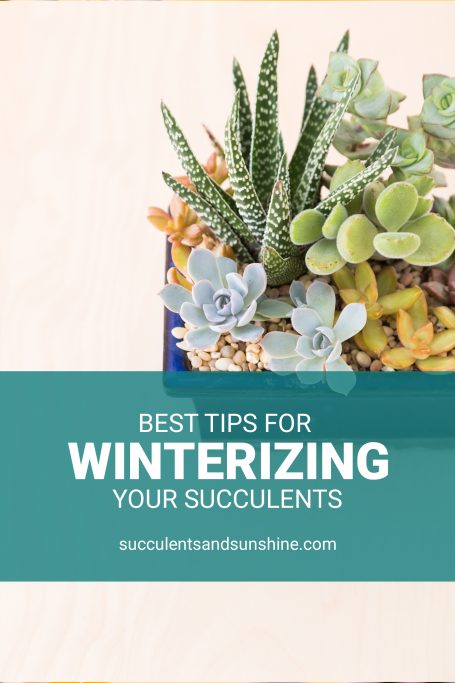
When should I bring my succulents inside for winter?
This is largely determined, again, by where you live and what you're growing. As a general rule, you'll want to bring your succulents in before the first frost. For many people in the US this is at the end of September.
Of course, if you are growing cold hardy succulents, they can stay outside all winter.
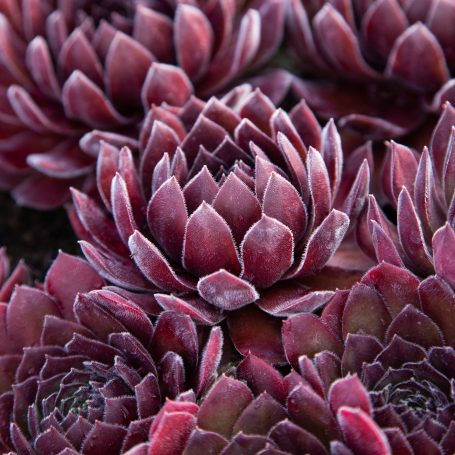
It's important to know what growing zone you live in. At the least you should know the average low temperature for your area. For example: when I lived in Utah we were a Zone 5. Most of the succulents I owned at the time were for Zone 9.
All succulents rated higher than Zone 5 can't survive the cold, and need to be indoors for the winter.
Since I currently live in the Phoenix area, a Zone 9, most of my succulents are fine outdoors year round. There are only a few succulents rated to a Zone 10 or 11 that will need to spend the winter inside.
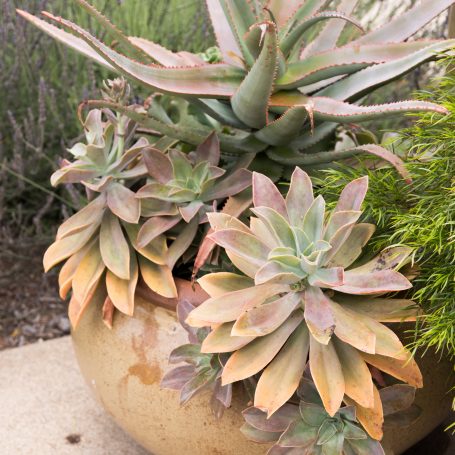
So, start by identifying your succulents. Then determine what growing zone you are in. See how the two compare! Bring in any plants that are rated higher than where you live.
This video will also help you determine if your succulents need to be brought indoors for the winter:
Moving Outdoor Succulents Inside
While you may be growing succulents inside all year round, succulents will benefit from being outside for at least part of the summer. Here's a check list to make sure the move from outside to inside goes as smoothly as possible:
Water Outside
Since it can be a hassle to water succulents indoors (bringing them all to the sink, waiting for them to stop dripping, etc.) water them one last time outside.
Try watering them 2-3 days before bringing them inside. This allows them to soak up the water they need and start to dry out. Then your shelf or table stays nice and dry once the succulents are inside.
Well Draining Soil
You'll also want to make sure (if they aren't already) that your succulents are in a well draining soil in a pot with a drainage hole. Succulents grown indoors will do much better if they have the right soil and container.
If you don't want to mix your own succulent soil, I've been using this succulent soil mix from Bonsai Jack and love it! It's the same recipe I used to make myself, but now I don't have to slave away for hours making it. Your succulents will definitely thank you for putting them in the right soil.
Prep the Pot for Inside
When you are finally ready to bring your succulents inside, you'll want to make sure the pot is ready. It's a good idea to wipe off the outside of the pot to remove any dirt, leaves or cobwebs that have become attached to the pot.
Also be sure to remove any debris, such as dead leaves, from around or between your succulents. Dead organic material can easily cause your succulents to rot or become infected.
I love my mini tool kit to help with this process! Once you've removed anything that doesn't belong, you can also add in or replace the top dressing to help the arrangement look extra cleaned up.
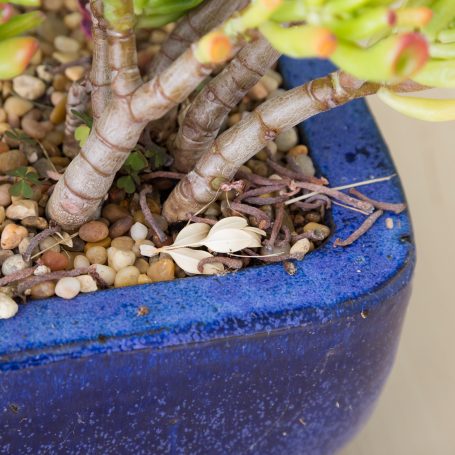
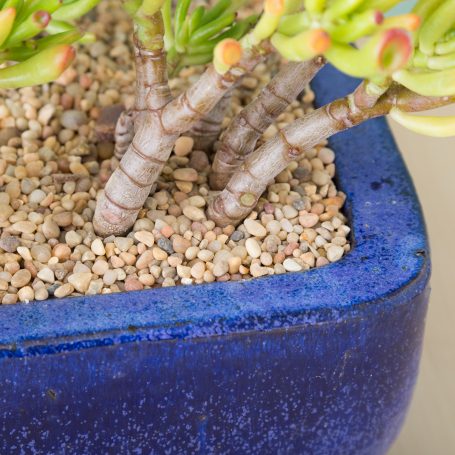
Check for Bugs
You don't want any visitors when you move your succulents inside. Inspect your succulents closely for signs of mealybugs, the most common succulent pest.
Also look for any other little bugs around your plants. I know at my house ants and potato bugs love to hang out in my pots. I see spiders frequently as well.
Try to remove these little guys as much as possible to keep your succulents healthier indoors.
Refresh the arrangement
As your succulent grows it's going to start shedding leaves. It's always a good idea to keep your succulents well pruned and maintained. This is especially important before bringing succulents in for the winter.
Use your fingers or the tweezers from the mini garden tool kit to remove as many of the dead leaves as possible. This will help prevent your succulent from rotting indoors.
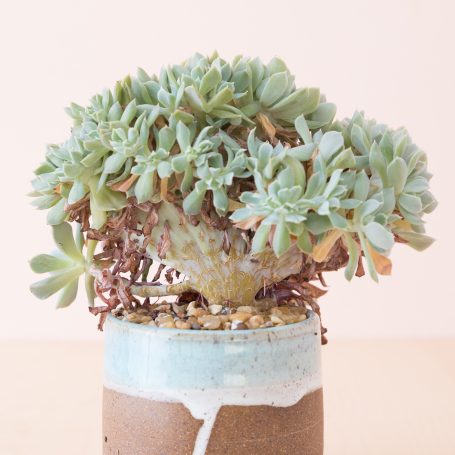
If any of your succulents have died over the summer, now is a great time to fill in the holes. The arrangement below stayed looking great over the summer, except for one monocarpic succulent. After it bloomed, it left a big hole.
I filled in the hole with a few succulent cuttings and it looks complete again! I also added some top dressing since it didn't have any.
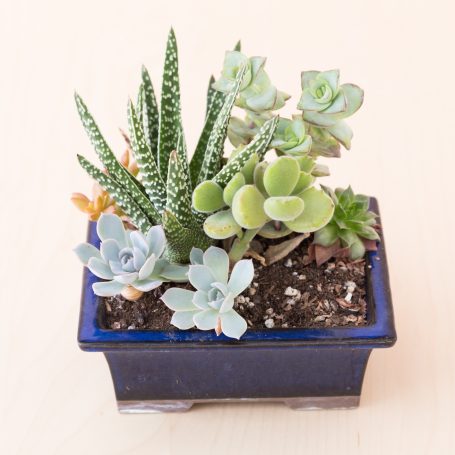

Winter Watering for Succulents
Now that your succulents are inside, it's time to start taking care of them!
Many succulents are dormant in the winter so they won't need as much water. However, some are actively growing and will need more attention.
I have an entire post on dormancy that includes a list of which succulents are winter growers and which are summer growers. Click here to read it and determine if your succulents are actively growing or dormant in winter.
You can also check out this post if you need help identifying your succulents.
If your succulents are winter growers they will likely need more frequent watering. My Aeonium ‘Zwartkop' (a winter grower) always seems to be a water hog over the winter.
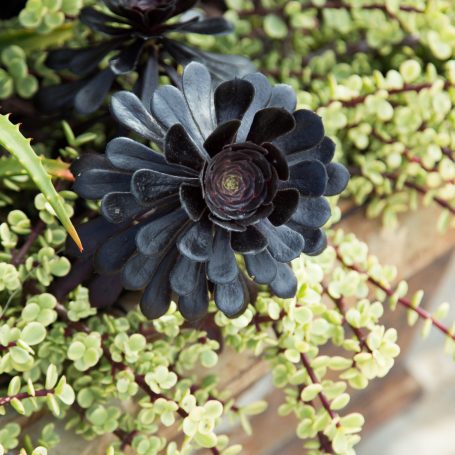
As a general rule though, you'll only want to water your plants when the soil is completely dry. Let them go several days, even a week or two between watering.
Your succulent will tell you when it needs water. If you're not sure what that looks like, be sure to click here and grab our free cheat sheet, Signs Your Succulents Need Water.
The airflow indoors is more limited than outside so without the proper soil it's very likely your succulents will stay wet for too long. Watering too frequently is the quickest way to kill your succulent.
Keep in mind that succulents near a heating vent might need more frequent watering. The direct air and warmer temperatures can dry things out more quickly.
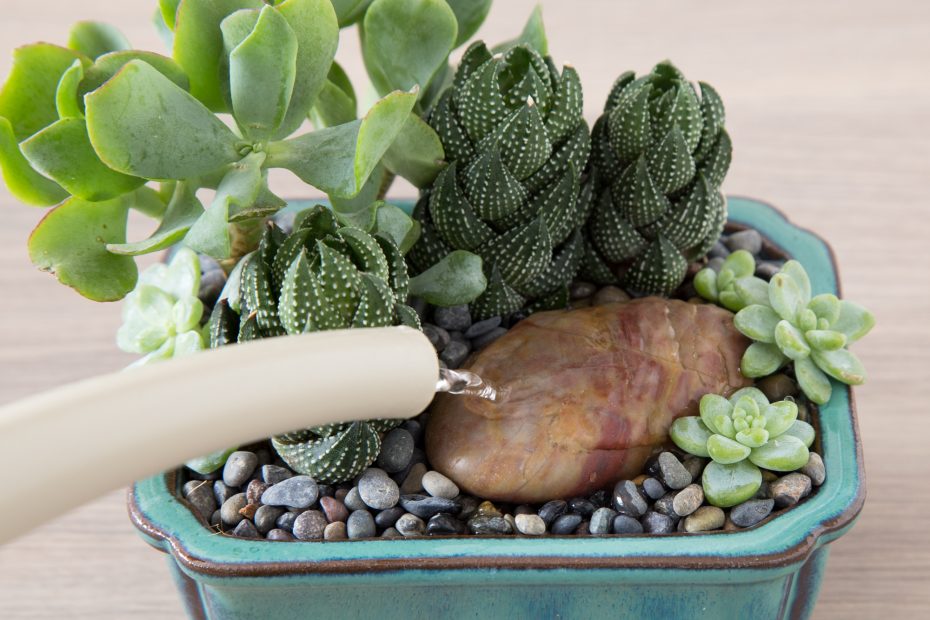
Plenty of Sunlight
One of the most difficult things about growing succulents indoors, especially over the winter, is making sure they get enough sunlight.
You'll want to place your succulents near the brightest window in your home. The ideal window will get bright, indirect sunlight all day.
Since the winter days are shorter this is especially important. Succulents need at least 8 hours of bright indirect sunlight each day to maintain their shape indoors.
With lots of gray or cloudy days in the winter you may find your succulents begin to stretch out or lean toward the window. This is a sign they aren't getting enough light.
In this case, you can rotate your succulents to help offset any leaning. But in order to prevent stretching you will need to supplement with a grow light.
Make sure you don't run the lights 24/7 as succulents do need dark at night to complete their regular growth cycle.
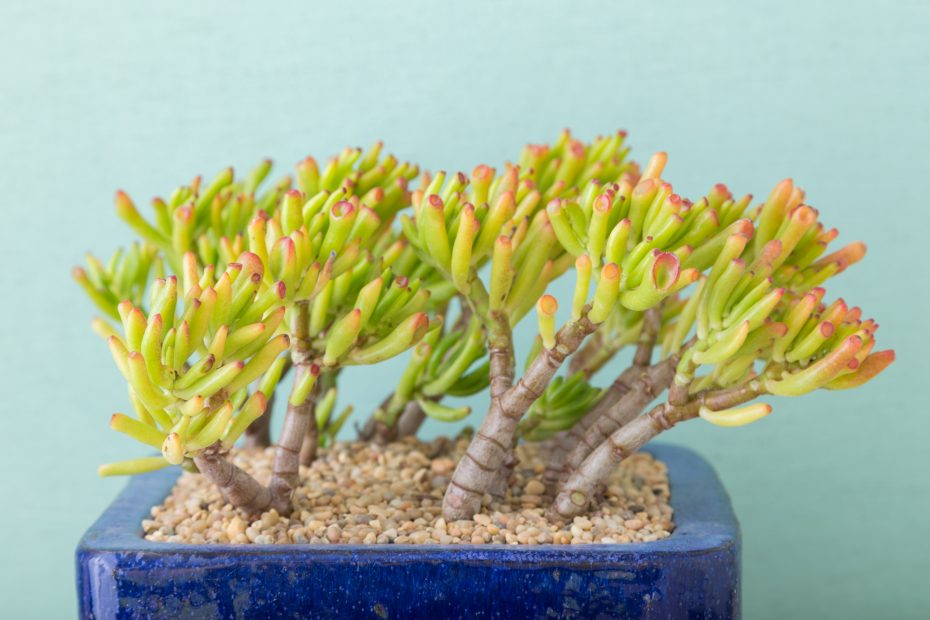
For succulents that do get stretched out or grow tall and leggy, at the end of the winter you can cut off the tops and propagate them! Then you'll have even more plants for the summer!
Since most succulents aren't growing as quickly over the winter, this is best done in the spring. For more details on how to do this, you can check out my post on stretching succulents here.
Frost Damage on Tender Succulents
If succulents are left out in temperatures below what they can tolerate, you'll begin to see damage from the frost or cold. It's not a pretty sight!
In some areas (like a zone 8 or 9) where temperatures only drop below freezing for a couple nights, you can use a frost cloth to cover your succulents on those coldest nights.
However, this is not a long term solution for colder climates where it is consistently below freezing, day and night.
Don't risk leaving your succulents out during extreme cold, even if they appear to be ok. Often the frost damage takes 2-3 days to show up.
This happened to me while living in Utah. I left my tender succulents outside for 3-4 nights when temperatures got below freezing.
They looked fine on the first two days, but the third day…
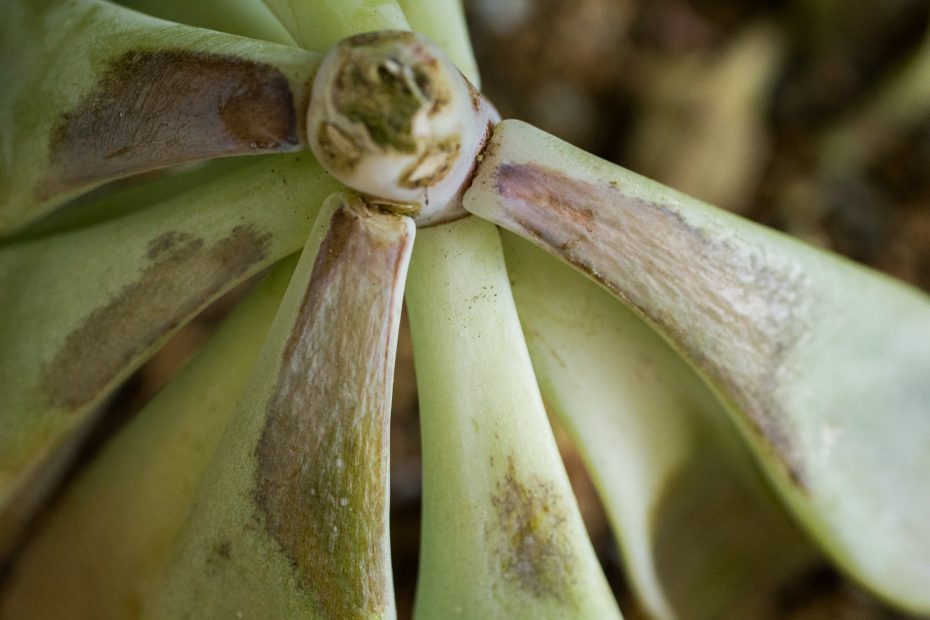
The most common thing I saw on these plants was dark mushy tissue. Weather that is too cold can cause the plant cells to burst, having the appearance of rot.
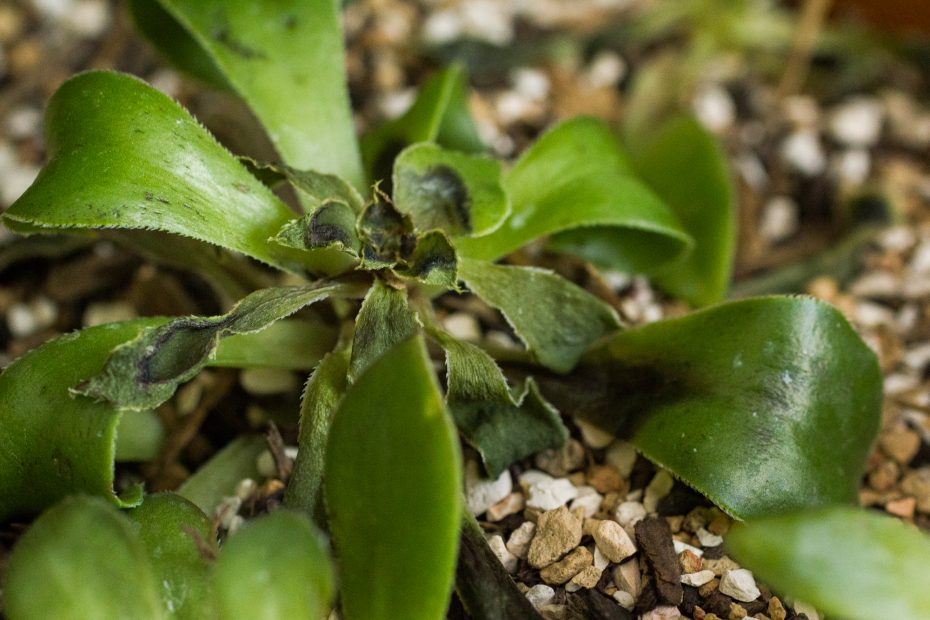
Aeoniums (above and below) are generally very sensitive to freezing temperatures. The one below was protected by some other plants so it didn't suffer as much damage.
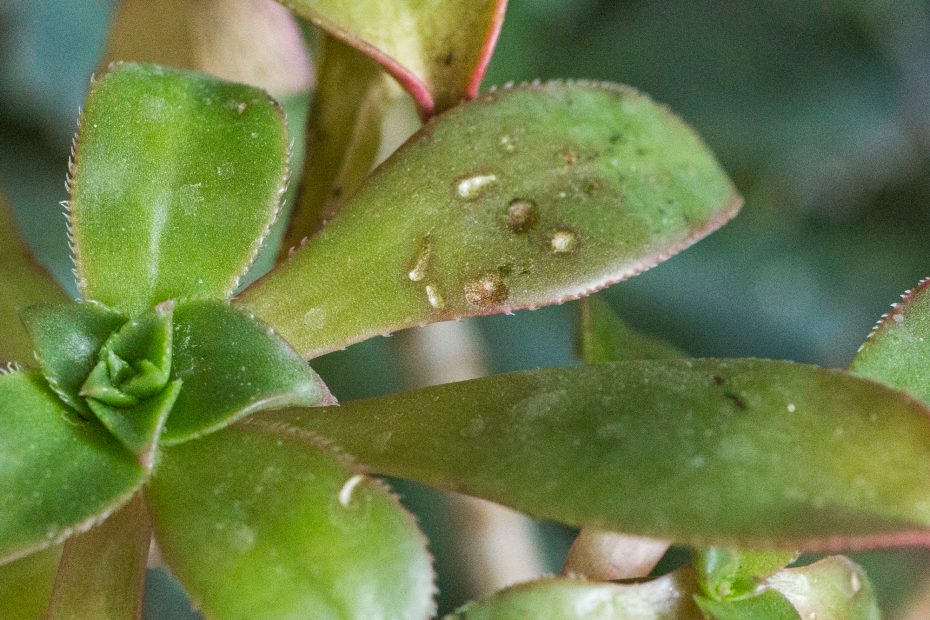
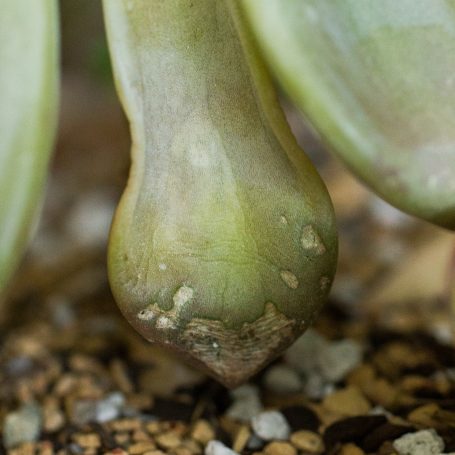
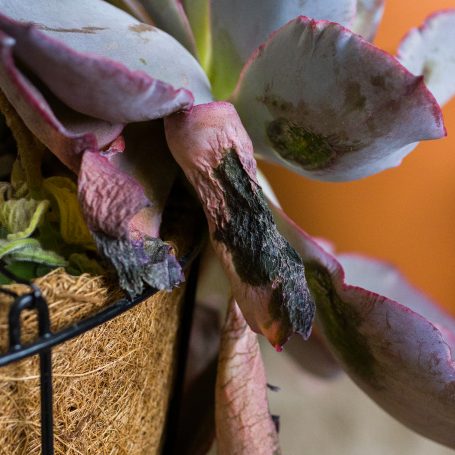
This is why it's very important to know which succulents you own and what temperatures they can tolerate.
Be sure to check out our Types of Succulents page for information on various succulent varieties.
You can also grab our ebook, Choosing the Best Succulents, for more help determining which succulents you should be growing based on where you live, how much you like to water, and more!
How to help succulents with frostbite
If your succulents already suffered from cold exposure. What do you do now?
The first thing is to move them somewhere out of the cold so they don’t get more exposure to that freezing temperature.
Next, let them dry out for several days, and possibly weeks depending on the severity of the frostbite. You want to let all the mushy areas from the frostbite dry out and scab over. Your succulent will be in emergency mode, trying to protect itself from further damage.
If you water too soon after frostbite occurs your succulent is more likely to rot and die.
Once the frostbitten areas have dried out, cut them off if possible. Sometimes this means you’ll be cutting away large chunks of the plant. Other times, you may just be cutting off the ends.
For example, with a tender Aloe or Agave, the ends might dry up. In that case, you can just cut the leaf to look like a normal Aloe or Agave leaf, but cut off all of that dried-out and crispy area.
Usually, frostbite will affect the outer edges of your succulent first, but doesn’t affect the center of the plant. This is what you’d hope for, a sort of “best case scenario.”
If the frostbite gets down into the stem of the succulent it’s likely it won't be able to be saved. However, you can cut off and clean out any damaged parts of the plant, and your succulent is more likely to survive.
Once you’ve cut off the damaged areas, wait another 2-3 days before watering. You want to give these cuts time to callous over and heal as well.
Then… after everything is dry again, it’s finally time to start watering your succulent. Make sure you’re following the soak and dry method I teach to encourage healthy root growth.
It’s important to know that the damaged areas you’ve removed from your succulents won’t grow back. But, if all goes according to plan, the new growth on your succulent should be healthy and look normal.
It will take some time for the succulent to look amazing again, but, as with most succulent gardening… your patience will pay off. In the next few weeks and months as your succulent grows it will start to look like it’s original happy self again.
Make sure that when you place the succulent back outside (or in the original spot it was growing) that it is protected from cold, and also extreme heat or sunlight. After having been in a protected area, you need to ease your succulent back into the growing conditions that it was used to before.
Shocking your succulent with dramatic changes in temperature or sunlight will cause problems as well.